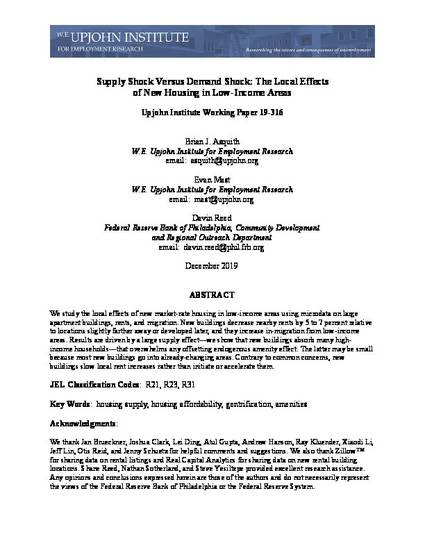
Unpublished Paper
Supply Shock Versus Demand Shock: The Local Effects of New Housing in Low-Income Areas
Upjohn Institute Working Papers
Upjohn Author ORCID Identifier
Publication Date
12-19-2019
Series
Upjohn Institute working paper ; 19-316
**Published Version**
In The Review of Economics and Statistics 105(2): 359–375
DOI
10.17848/wp19-316
Abstract
We study the local effects of new market-rate housing in low-income areas using microdata on large apartment buildings, rents, and migration. New buildings decrease nearby rents by 5 to 7 percent relative to locations slightly farther away or developed later, and they increase in-migration from low-income areas. Results are driven by a large supply effect—we show that new buildings absorb many high-income households—that overwhelms any offsetting endogenous amenity effect. The latter may be small because most new buildings go into already-changing areas. Contrary to common concerns, new buildings slow local rent increases rather than initiate or accelerate them.
Issue Date
December 2019
Disciplines
Citation Information
Asquith, Brian J., Evan Mast, and Davin Reed. 2019. "Supply Shock Versus Demand Shock: The Local Effects of New Housing in Low-Income Areas." Upjohn Institute Working Paper 19-316. Kalamazoo, MI: W.E. Upjohn Institute for Employment Research.
